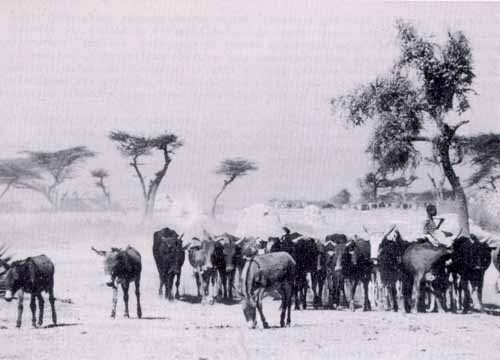The use of incentives for promoting community integration in forestry and conservation programmes has been a consistent feature of national programmes and internationally funded projects for more than fifty years. However, experiences have been highly varied and information scattered, and much still remains to be learnt about tailoring individual incentive packages to maximize local community involvement.
In order to review the experiences gained in this area, FAO organized a study tour in 1980 on incentives for integrating communities in forestry and conservation programmes. The countries visited were Honduras, Jamaica, Colombia and Venezuela. Experiences in Ethiopia, Korea, Indonesia and elsewhere are also referred to in this Guide.
The Guide follows on the policy developed by Guide No. 8 on the participation of mountain communities and reflects the importance which FAO advisory and governing bodies assign to the socio-economic aspects of watershed management.
This version of the Guide is based on the work and experience of Mr. Ronnie de Camino and on earlier versions by Mr. Pedro Hidalgo and Mr. Carlos Flinta, with technical and editorial comments from Forestry Department staff, coordinated by Mr. L.S. Botero and Mr. T. Michaelsen from the Forest Resources Division.
The publication of this document has been made possible by a special contribution from the Swedish International Development Authority (SIDA) to FAO's Forestry for Local Community Development Programme.
We hope this Guide will prove useful in the appropriate application of incentives for mountain community involvement based on voluntary cooperation, equality of rights and obligations and the promotion of rural organization and self-management.
J.P. Lanly
Director
Forest Resources Division
Forestry Department
The aim of this Guide is to describe the natural resources situation and outlook in developing countries and demonstrate the value of using incentives to promote community involvement in forestry and conservation programmes. An attempt is made to standardize the language of specialists by providing basic definitions and these are followed by a discussion of the problems arising from inappropriate land and water use. The advantages of rural communities exploiting resources more rationally are also shown.
The incentives themselves are classified, defined and analysed, and ways of applying them at national and project level are discussed. Examples are provided of the effects incentives have had in various countries.
The crisis of natural resources in developing countries is the result of sustained resource abuse over a period of centuries or decades. The consequences of this for the world are likely to be disastrous, as the population continues to expand and the resource base to shrink.
We must react by starting a generalised movement towards integrated rural development aimed at the conservation and rehabilitation of natural resources, especially in mountain areas where the danger is greatest. However, communities need the support of plans and programmes that provide sufficient incentives for them to take an active and ongoing part in efforts to stabilize agriculture and introduce productive forestry activities with a view to settling the population in accordance with the capacity of the environment to sustain economic activities.
As conservation and afforestation plans and projects have been shown to be both economically and financially feasible, they offer plenty of scope for improving the lot of the rural population, although the poorest areas will need State help with the initial investment.
This Guide presents and discusses the most commonly used incentives, and gives advice on their planning at national and project level. It also takes a look at some of the varied experiences of countries which have tackled the issue.
The aims of the Guide are:
- to present and discuss the different types of incentive available, and when it is appropriate to use them for promoting community involvement in upland reforestation and conservation plans and projects;
- to provide some guidelines for setting up an incentive system at national and individual project level, together with numerical examples illustrating the effects of incentives;
- to describe three country studies (Ethiopia, Korea and Honduras) of upland reforestation and conservation plans and projects, with special emphasis on the use of incentives.
The population will grow by more than 100 million a year and ninety percent of this will be in the developing countries
